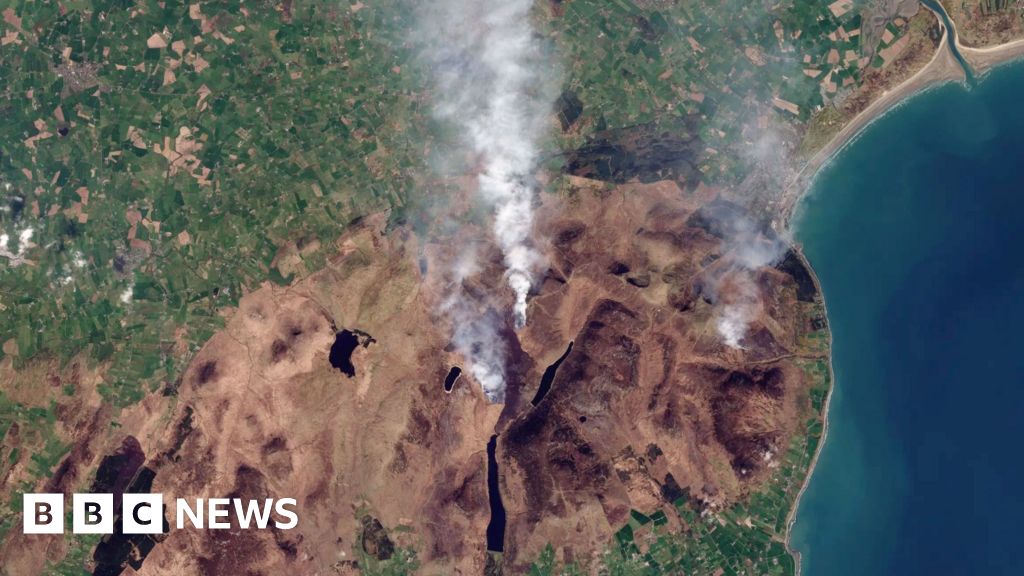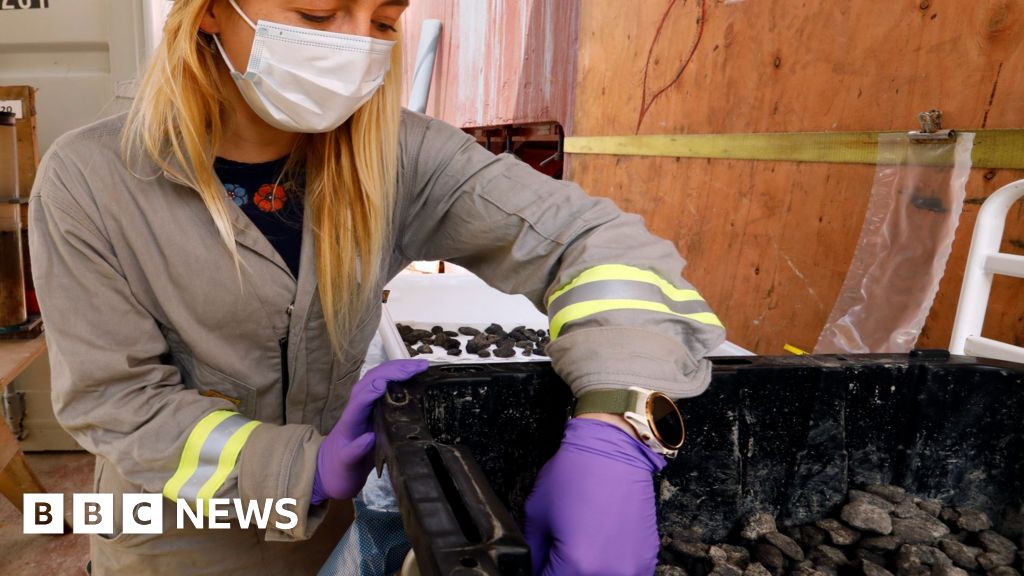ARTICLE AD BOX
By Justin Rowlatt
Climate Editor
Image source, Vindolanda
Image caption,Experts at Roman fort Vindolanda fear that climate change is drying the peat soil that protects ancient objects
Climate change is threatening to destroy treasures buried in the UK as the soils that protect them dry out.
A Roman toilet seat, the world's oldest boxing glove, and the oldest handwritten letter by a woman are some of the extraordinary objects discovered in at-risk British peatlands.
It means climate change could undermine our understanding of our past, say archaeologists.
About 22,500 archaeological sites in UK may be in danger.
The problem is that changing weather patterns are drying out some peatlands - the waterlogged soils that cover about 10% of the UK.
Because peat contains very little oxygen, organic materials like wood, leather and textiles do not rot. They can survive for thousands of years, preserved by the stable anoxic chemistry of the soil.
But if the soils dry, oxygen can enter the system, kick-starting the process of decomposition. If that happens artefacts can, quite quickly, rot away.
Excavating these potentially huge sites could cost hundreds of millions of pounds and take decades, by which time they may have been badly damaged.
Image source, Vindolanda
Image caption,A baby's shoe was preserved for about 2,000 years in peat soil
The trustees of Magna, a Roman fort alongside Hadrian's Wall, fear the process is already under way at the site.
The land at Magna has subsided by up to a metre in places in the past decade. It is evidence of "desiccation" - the drying of the peat layer - fears Dr Andrew Birley, the chief archaeologist at the site.
It means "an historical time capsule" is at risk, he says, because only a tiny part of the site has so far been excavated.
"This place has the potential to be quite frankly, amazing," Dr Birley believes. "Pretty much everything the Romans used here for 300 or 400 years could have been preserved in more or less the same state it was thrown away, which is an incredible opportunity."
Image source, Vindolanda
Image caption,A toilet seat used by Romans is one of the objects found preserved in UK peatlands
Another fort a few miles along Hadrian's Wall gives an idea of the astonishing objects that could lie hidden at Magna.
Digs at Vindolanda have uncovered the world's oldest boxing gloves - so well-preserved that you can still see the imprint of the boxer's knuckles on one.
More Roman footwear has been discovered here than at any other site in the world.
It is also the source of the oldest handwritten message by a woman found anywhere.
In the note, Claudia Severa, the wife of the commanding officer of a nearby fort, invites her friend Lepidina to her birthday party on 11 September about 1,900 years ago.
"Oh how much I want you at my birthday party," writes Claudia. "You'll make the day so much more fun. I do so hope you can make it. Goodbye, sister, my dearest soul."
Image source, Vindolanda
Image caption,A boxing glove was found as well as combs, toys and shoes at the site of Roman forts
Day-to-day objects like this provide a unique connection to the lives of ordinary people in ancient times.
"This sort of stuff doesn't normally survive, " says Dr Birley, who works at both sites. "It can give us amazing insights into what life was really like here on the Northern frontier almost 2,000 years ago."
He says the priority at Magna now is to try to work out what is happening underground.
Boreholes have been dug, and electronic equipment measures the water flow and temperature every hour.
Image source, Getty Images
Image caption,Whole bodies have been found in peat soils, like the famous Lindow man discovered in Cheshire
At Teesside University, Dr Gillian Taylor is analysing the chemicals in soil cores from the site to try to understand the processes at work.
It would be a "catastrophe" for any organic artefacts if the peat dries, she says. "The risk is they will disappear. We will lose our heritage if we don't look at what's occurring now."
Fearing the worst, Dr Birley is planning to dig the first test trenches at the site next year. As a small charity, it's the earliest they can start given the cost and labour needed.
He says if it looks like the condition of the peat is changing rapidly and the treasures could be lost, a full excavation may be necessary.
And changing weather patterns are not just threatening the survival of Roman remains. Experts estimate that there are about 22,500 archaeological sites in or beneath peat in the UK.
Dr Rosie Everett, of Northumbria University, is part of a team that has been assessing the effect of climate change on peatland archaeology across the UK.
She says a host of historic sites in peatlands are under threat, covering the entire sweep of the country's history.
There are Neolithic pathways up to 12,000 years old, and Bronze Age burial sites as well as the remains of more modern settlements and industrial activities.
"Peatlands represent such a small part of the ecology of Britain, but they have massive potential to tell us about our past," says Dr Everett.
While an archaeologist working at a "dry" site might find 10% of what was once there, at a peatland site they may find as much as 90% of the material culture of ancient communities, say archaeologists.
"The loss of peatlands would have big implications for the understanding of the country's history but also for our climatic history and our environmental history," says Dr Everett.
That's why she believes there should be greater efforts to protect them.
Dr Birley agrees. "If we lose places like this, we lose that direct connection to the people who lived in this island 2000 years ago," he says.
"We lose the chance to learn as much as we can about them. And we lose part of our own heritage and part of our own history."

 3 years ago
60
3 years ago
60








 English (US) ·
English (US) ·